
Formative Assessment - Investigate and analyze function families - Just in Time Quick Check, Teacher Notes, and Supporting Resources
- Subject:
- Mathematics
- Material Type:
- Assessment
- Lesson Plan
- Provider:
- VDOE
- Author:
- VDOE
- Date Added:
- 10/07/2024

Formative Assessment - Investigate and analyze function families - Just in Time Quick Check, Teacher Notes, and Supporting Resources

Formative Assessment - Investigate and analyze function families - Just in Time Quick Check, Teacher Notes, and Supporting Resources

Formative Assessment - Investigate and analyze linear, quadratic, absolute value, square root, cube root, rational, polynomial, exponential, and logarithmic function families - Just in Time Quick Check, Teacher Notes, and Supporting Resources

Formative Assessment - Investigate and analyze function families - Just in Time Quick Check, Teacher Notes, and Supporting Resources

Formative Assessment - Investigate and analyze function families; Connections between multiple representations of functions - Just in Time Quick Check, Teacher Notes, and Supporting Resources

Formative Assessment - Investigate and analyze function families; Focus on end behavior - Just in Time Quick Check, Teacher Notes, and Supporting Resources

Formative Assessment - Investigate and analyze function families; Focus on vertical and horizontal asymptotes - Just in Time Quick Check, Teacher Notes, and Supporting Resources

Formative Assessment - Investigate and analyze function families; Focus on inverse of a function - Just in Time Quick Check, Teacher Notes, and Supporting Resources

Formative Assessment - Investigate and analyze function families; Focus on composition of functions algebraically and graphically - Just in Time Quick Check, Teacher Notes, and Supporting Resources

Formative Assessment - Investigate and describe the relationships among solutions of an equation, zeros of a function, x-intercepts of a graph, and factors of a polynomial expression - Just in Time Quick Check, Teacher Notes, and Supporting Resources

Formative Assessment - Collect and analyze data, determine the equation of the curve of best fit in order to make predictions and solve practical problems, using mathematical models of quadratic and exponential functions - Just in Time Quick Check, Teacher Notes, and Supporting Resources
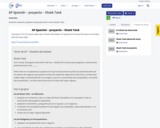
Students research, prepare and present the tv show Shark Tank.
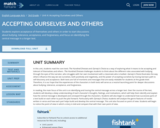
In this unit, students read the core texts The Hundred Dresses and Garvey's Choice as a way of exploring what it means to be accepting and tolerant of themselves and others. The Hundred Dresses challenges students to think about the different roles associated with bullying through the eyes of the narrator, who struggles with her own involvement with a classmate who is bullied. Garvey's Choice illustrates the way others influence the way we see ourselves, both positively and negatively, and the power of accepting ourselves by tracing Garvey's path to self-discovery and acceptance. Both texts are full of moments and messages that are easily relatable for students at this grade level. Therefore, it is our hope that the experiences of the characters in both texts will serve as a neutral launching point for deeper discussions about bullying, tolerance, acceptance, and forgiveness.
In reading, the main focus of the unit is on identifying and tracing the central message across a longer text. Over the course of the text, students will develop a deep understanding of each character's thoughts, feelings, and motivations, which will help them identify and explain how the central message is developed and conveyed through the characters. Students will also begin to understand how successive parts of a text build on each other to push the plot forward. Particularly with Garvey's Choice, students will analyze the genre features of novels written in verse and how each part helps build and develop the central message. This unit also focused on point of view. Students will begin to notice the point of view in which a story is told and compare that with their own point of view.

The series of lessons allows students to review the concepts of mutations, adaptations and natural selection by studying a population of pocket mice through a video clip and then applying their knowledge through a simulation game.
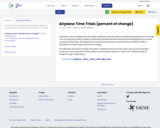
This lesson uses an experiment with paper airplanes to provide data to practice finding percent of change.
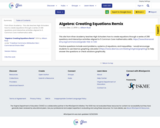
From Khan Academy- This site teaches High Schoolers how to create equations through a series of 298 questions and interactive activities aligned to 5 Common Core mathematics skills.

Formative Assessment for students with the alphabet in French. Example list provided but teacher can adapt to any words they would like. Recommendation to focus on letters often confused by anglophone students.
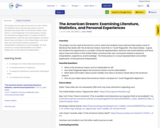
This project can be used at the end of a unit in which the students have read and discussed a work of literature that deals with The American Dream; here that is F. Scott Fitzgerald's The Great Gatsby. It gives the students the opportunity to consider a fictional representation, examine real world statistics and facts about class and status in the United States, and draw their own conclusions based on personal interpretation, experience, and knowledge. The final product is a visual representation and written explanation of that personal interpretation.
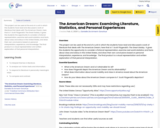
This project can be used at the end of a unit in which the students have read and discussed a work of literature that deals with The American Dream; here that is F. Scott Fitzgerald's The Great Gatsby. It gives the students the opportunity to consider a fictional representation, examine real world statistics and facts about class and status in the United States, and draw their own conclusions based on personal interpretation, experience, and knowledge. The final product is a visual representation and written explanation of that personal interpretation.
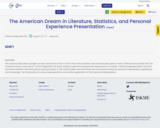
This resource describes a project can be used at the end of a unit in which the students have read and discussed a work of literature that deals with The American Dream; here that is F. Scott Fitzgerald's The Great Gatsby. It gives the students the opportunity to consider a fictional representation, examine real world statistics and facts about class and status in the United States, and draw their own conclusions based on personal interpretation, experience, and knowledge. The final product is a visual representation and written explanation of that personal interpretation.